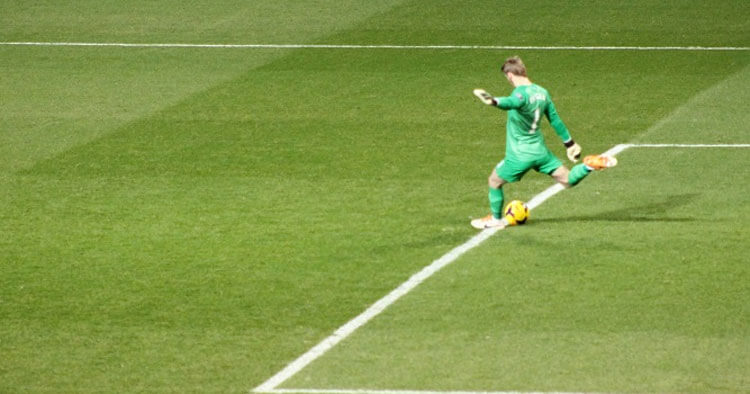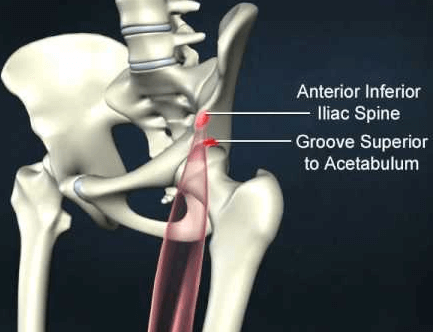Muscle Pain and Tendinopathy
Rectus Femoris: Muscle Of The Week
Rectus Femoris A Two Joint Muscle
The rectus femoris muscle is one of four quadriceps muscles, it is the most superficial and longest of all the quadriceps muscles positioned in the middle, front of the thigh. The three other quadriceps muscles by name are vastus medialis, vastus intermedius and vastus lateralis. All four quadriceps muscles insert into to the knee cap via the quadriceps tendon, however of the group of four muscles rectus femoris is unique and is the only one crossing two joints. By crossing both the hip and the knee it can act across both joints where as the three other quadriceps muscles can only exert force on the knee joint, contracting to create and control knee extension and flexion movements. Rectus femoris can assist the movement of hip flexion, flexing the thigh at the hip joint bringing it up towards the chest and along with the other quadricep muscles extending the leg at the knee joint, generating knee extension.
The Anatomy Of Rectus Femoris
As mentioned above rectus femoris is a two joint muscle and travels from the pelvis to just below the knee. Specifically the origin of rectus femoris has two heads, a straight head origin from the anterior inferior iliac spine of the pelvis and the reflected head from above the acetabulum *(as can be seen in the image above). From these origins the muscle passes down the thigh lying superficial to vastus intermedius muscle the deep lying quadricep muscle and travels down to its insertion combining with the other quadriceps muscles helping form the quadriceps tendon, ultimately engulfing the knee cap and flowing on into the patella tendon a short and strong tendon which goes on to insert into the tibial tuberosity. Through the insertion of the patella tendon on the proximal tibia, the contracting quadriceps muscle can act to generate powerful straightening of the knee.
A Muscle Useful In Sprinting And Kicking
So functionally what does the rectus femoris do? When playing football codes the muscle is used powerfully when kicking a ball. Considered one of the muscles making up the “hip flexor group” hip flexors being the muscles that work to bring the leg and trunk closer together, vital when kicking in helping drive the thigh forward when striking a ball. Combining this hip flexion role along with the three other quadriceps muscles it also helps extend the leg at the knee swinging the foot towards the ball. When striking a ball, leg cocked behind you, knee flexed in back swing, the rectus femoris contracts strongly to help drive the thigh forward and straighten the knee bringing it into contact to make contact with the ball out in front of you.
- When in a position like sitting and the hip is flexed, rectus femoris is a weak knee extensor seeing that the muscle is already shortened in this position. In this seated position the three other quadriceps muscles do the lion share of the work when straightening the knee having a better mechanical advantage to act on the knee.
- Rectus femoris is also a weaker hip flexor when the knee is extended, again due to already being in a somewhat shortened position and mechanically can’t act as strongly to flex the hip joint.
Your rectus femoris is also involved fairly significantly in simply walking, running, sprinting and cycling motions. With its unique ability to cause and assist both hip flexion as well as knee extension rectus femoris is active in a number of phases throughout both gait and cycling motions .
Disclaimer: Sydney Physio Clinic does not endorse any treatments, procedures, products mentioned. This information is provided as an educational service and is not intended to serve as medical advice. Anyone seeking specific orthopaedic advice or assistance on Rectus Femoris: Muscle Of The Week should consult his or her general practitioner, sports medicine specialist, physiotherapist or otherwise appropriately skilled practitioner.



